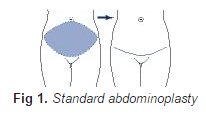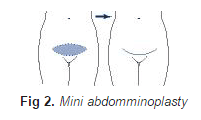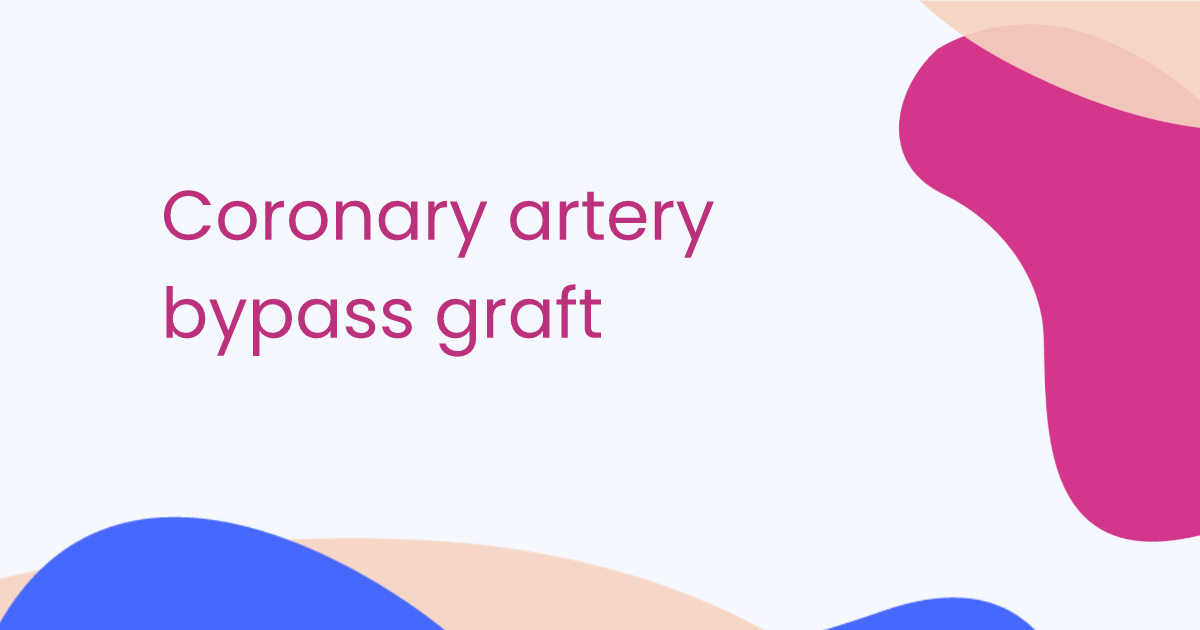Bauchdeckenstraffung
Abdominoplasty
Peer reviewed by Dr Helen Huins, MRCGPLast updated by Dr Jacqueline Payne, FRCGPLast updated 24 Mar 2016
Erfüllt die Anforderungen des Patienten redaktionelle Richtlinien
- HerunterladenHerunterladen
- Teilen Sie
- Sprache
- Diskussion
In this series:Obesity and weight lossWeight gainChildhood obesityWeight loss surgeryOrlistatCalorie calculator
Diese Seite ist archiviert worden.
Sie wurde in letzter Zeit nicht überarbeitet und ist nicht auf dem neuesten Stand. Externe Links und Verweise funktionieren möglicherweise nicht mehr.
Bei diesem Verfahren können überschüssige Haut und Fett entfernt, die Bauchkonturen und Narben verbessert und die Muskeln gestrafft werden.
In diesem Artikel:
Dieses Merkblatt wird von der British Association of Aesthetic Plastic Surgeons (Britischer Verband der Ästhetisch-Plastischen Chirurgen) zur Verfügung gestellt, dem Berufsverband, der für die Förderung der Ausbildung und Sicherheit in der Ästhetisch-Plastischen Chirurgie zuständig ist.
This is also called an abdominoplasty or tummy tuck. Different combinations are combined in the various procedures.
Lesen Sie unten weiter
The standard abdominoplasty
Standard abdominoplasty

The excess skin and fat of the abdominal wall between the pubic area and the umbilicus (navel) is removed leaving the umbilicus in place. The skin of the abdominal wall at the level of the umbilicus is then drawn down to suture it at the pubic level. The patient is left with a long, usually curved scar across the lower part of the abdominal wall at the level of the pubic hair. There is also a scar around the umbilicus. Any looseness of the muscles of the abdominal wall or hernia is repaired at the same time.
Liposuction may be carried out during this procedure to thin the abdominal wall, or as a separate procedure either before or after the abdominoplasty.
Mini abdominoplasty

In the mini-abdominoplasty surplus skin below the umbilicus is removed leaving a low abdominal scar at the level of the pubic hair. The umbilicus is not disturbed but liposuction is usually carried out at the same time as the procedure to reduce the thickness of fat in the abdominal wall and any laxity or hernia of the abdominal wall is repaired at the same time.
In the extended abdominoplasty surplus skin and fat of the loins and back are also removed so that the scar extends around the flanks on to the lower back.
Extended abdominoplasty

The endoscopic abdominoplasty is used to tighten the muscles of the abdominal wall to give a better contour and is carried out through a short transverse incision above the pubic hair. Skin is not removed but liposuction can be carried out at the same time.
The apronectomy is a modification of the mini-abdominoplasty for patients who have a large excess of skin and fat hanging down over the pubic area. In this procedure only the surplus skin and are removed. The scar is long and transverse extending from one side of the apron to the other.
Modifications to the abdominoplasty skin excision are made when the patient has particular problems associated with scars from previous operations.
An alternative procedure which should always be considered instead of many of the above is liposuction on its own. This reduces fat and causes just a little retraction of the skin.
Who is a candidate?
Anyone who has abdominal skin and fat may be a candidate. With women the problem is usually caused by pregnancy, but is greatly aggravated by weight loss. The muscles of the abdominal wall may be weakened by pregnancy and actually pulled apart in the middle (divarification of recti). Men are similarly affected by weight loss. Stretch marks (striae) are simply the scars which are left after extreme stretching of the skin. They are usually most apparent on the lower part of the abdominal wall. There is no specific treatment for these stretch marks, but many of them are excised in an abdominal reduction and those that are left are tightened making them look less obvious.
Patients that are unable to tighten the abdominal wall skin with exercise or wish to achieve a smoother flatter abdomen will also benefit.
Lesen Sie unten weiter
Was sind die Folgen?
The patient is left with noticeable scars. The main scar runs transversely across the lower part of the abdomen (see illustrations above) and in a standard abdominal reduction there will be a scar around the umbilicus. Other or different scars may be left where the patient has particular individual problems. Some patients make better scars than others and in any case all scars are red initially. It is essential that the patient understands where these scars will be and should discuss them with the surgeon. Although we try to hide them beneath underwear and swimwear, fashions can change making previously covered scars visible.
There is numbness in the lower part of the abdominal wall after surgery. This is usually temporary but could be permanent. Swelling above the scar is usually present due to a collection of tissue fluid which normally drains to the groin. This swelling or oedema settles within a few months.
Was sind die Grenzen?
The skin is usually tightened downwards and this does not tighten the waist. If this is desired then one can consider removing skin vertically, but one should bear in mind that vertical scars of the abdomen are less good. The tissue of the abdominal wall is generally fatter than the groin and if liposuction is not carried out a fatty bulge may remain above the scar.
The beneficial effects of the operation will last well. However, the effects will be maintained better if the patient keeps exercising the muscles and the weight steady. A further pregnancy will of course stretch the skin again, although probably not to the same degree.
Lesen Sie unten weiter
Was sind die Risiken?
The standard abdominoplasty is a large procedure requiring two to four days of hospitalisation. Drains are removed when they stop draining blood and serum a few days after the procedure. This fluid can reaccumulate after the drains are removed requiring drainage or aspiration.
Healing can be slow particularly in the tighter central part of the wound and sometimes dressings are needed for a few weeks. This is more common in patients who are overweight and who smoke. This tends to leave more obvious scars which are tethered - these can be revised.
Secondary procedures are sometimes carried out to tidy up the results and will involve scar revision and limited liposuction. Displacement of the umbilicus to one side has been over-publicised and is rare. Deep vein thrombosis and pulmonary embolus are rare complications of any operation, including this one.
What would you need to do before the operation?
If you are overweight you would be well advised to diet as best results are obtained in people who are the correct weight for their height. If you are taking the contraceptive pill you should stop doing so for six weeks before surgery and use an alternative method in order to reduce the risk of thrombosis. If you smoke there is a greater risk of chest infection and in particular healing of the abdominal wound is less good.
What you should expect at the time of the operation
You will need to be in hospital for one to three days. When you wake up for your operation it is likely that you will be having a transfusion of salt solution. This is quite normal and is to provide you with fluid you need whilst you are not drinking. You are likely to have drainage tubes coming out of each side of the lower abdomen which are there to drain any collection of blood or serum. You can expect some moderately severe pain for which you will be given painkilling tablets or injections. You will be asked to keep your knees and hips bent to take the strain off your stitches.
Recuperation
Overactivity in the early days reduces healing and increases fluid accumulation. Light activities are comfortable in 10 to 20 days. Sports will not be possible for about 6 weeks particularly when the muscles have been strengthened with sutures. A corset is usually helpful to reduce the swelling and improve comfort in the first month.
Content used with permission from the British Association of Aesthetic Plastic Surgeons website: Tummy Tuck (Abdominoplasty). Copyright for this leaflet is with the BAAPS.
Haftungsausschluss
Dieses Merkblatt soll nützliche Informationen liefern, ist aber nicht als Ratschlag für einen bestimmten Fall zu verstehen. Sie ersetzt nicht die Notwendigkeit einer gründlichen Beratung, und alle potenziellen Patienten sollten den Rat eines entsprechend qualifizierten Arztes einholen. Die BAAPS übernimmt keine Haftung für Entscheidungen, die der Leser in Bezug auf die von ihm gewählte Behandlung trifft.
Patientenauswahlen für Andere Operationen und Verfahren

Chirurgie und Verfahren
Kniegelenkersatz
Ein Knieersatz ist eine Operation, bei der beschädigte Teile des Kniegelenks ersetzt werden. Dabei kann es sich entweder um einen totalen Knieersatz (TKR) oder um einen teilweisen (unikompartimentellen) Knieersatz handeln. Der neue Teil des Gelenks wird Prothese genannt.
von Dr. Philippa Vincent, MRCGP

Chirurgie und Verfahren
Koronararterien-Bypass-Transplantation
Coronary artery bypass grafting (CABG) is a type of heart surgery to treat coronary artery disease. The standard surgery requires open heart surgery and stopping of the heart temporarily.
von Dr. Doug McKechnie, MRCGP
Weiterführende Literatur und Referenzen
- Calle EE, Rodriguez C, Walker-Thurmond K, et alÜbergewicht, Fettleibigkeit und Krebssterblichkeit in einer prospektiv untersuchten Kohorte von Erwachsenen in den USA. N Engl J Med. 2003 Apr 24;348(17):1625-38.
- Flegal KM, Kit BK, Orpana H, et alAssoziation der Gesamtmortalität mit Übergewicht und Adipositas unter Verwendung von Standard-Body-Mass-Index-Kategorien: eine systematische Überprüfung und Meta-Analyse. JAMA. 2013 Jan 2;309(1):71-82. doi: 10.1001/jama.2012.113905.
- Adipositas im Vereinigten Königreich: Eine psychologische PerspektiveBritische Psychologische Gesellschaft, 2011
- Übergewicht und Fettleibigkeit bei KindernWeltgesundheitsorganisation
- Oude Luttikhuis H, Baur L, Jansen H, et al; Interventions for treating obesity in children. Cochrane Database Syst Rev. 2009 Jan 21;(1):CD001872. doi: 10.1002/14651858.CD001872.pub2.
- MEND(Geist, Bewegung, Ernährung ... Tu es!)
- Position statement: Childhood obesity; Royal College of Paediatrics and Child Health, 2012
- Hsia DS, Fallon SC, Brandt MLAdoleszente bariatrische Chirurgie. Arch Pediatr Adolesc Med. 2012 Aug;166(8):757-66. doi: 10.1001/archpediatrics.2012.1011.
- Sjostrom LÜberprüfung der wichtigsten Ergebnisse der Swedish Obese Subjects (SOS)-Studie - einer prospektiven, kontrollierten Interventionsstudie zur bariatrischen Chirurgie. J Intern Med. 2013 Mar;273(3):219-34. doi: 10.1111/joim.12012. Epub 2013 Feb 8.
- Healthy lives, healthy people. A call to action on obesity in England; Dept of Health, 13 October 2011
- Reducing obesity and improving diet: Policy; Dept of Health, March 2013
- Body-Mass-Index (BMI)-Tabellen für Mädchen und Jungen im Alter von 2-18 JahrenRoyal College of Paediatrics and Child Health und Ministerium für Gesundheit
- Colquitt JL, Pickett K, Loveman E, et alChirurgie zur Gewichtsabnahme bei Erwachsenen. Cochrane Database Syst Rev. 2014 Aug 8;8:CD003641. doi: 10.1002/14651858.CD003641.pub4.
- Arterburn DE, Courcoulas APBariatrische Chirurgie bei Adipositas und Stoffwechselerkrankungen bei Erwachsenen. BMJ. 2014 Aug 27;349:g3961. doi: 10.1136/bmj.g3961.
- Fettleibigkeit, Übergewicht mit Risikofaktoren: Liraglutid (Saxenda)NICE Evidenz-Zusammenfassung, Juni 2017
- Hafekost K, Lawrence D, Mitrou F, et alBekämpfung von Übergewicht und Adipositas: Stimmt die Botschaft der öffentlichen Gesundheit mit der Wissenschaft überein? BMC Med. 2013 Feb 18;11:41. doi: 10.1186/1741-7015-11-41.
- Über Adipositas: Body Mass IndexMEND - Mytime Active
- Yeh JS, Kushner RF, Schiff GDAdipositas und Management der Gewichtsabnahme. N Engl J Med. 2016 Sep 22;375(12):1187-9. doi: 10.1056/NEJMclde1515935.
Lesen Sie unten weiter
Artikel Geschichte
Die Informationen auf dieser Seite wurden von qualifizierten Klinikern verfasst und von Fachleuten geprüft.
24 Mar 2016 | Neueste Version

Fragen, teilen, verbinden.
Stöbern Sie in Diskussionen, stellen Sie Fragen, und tauschen Sie Erfahrungen zu Hunderten von Gesundheitsthemen aus.

Fühlen Sie sich unwohl?
Beurteilen Sie Ihre Symptome online und kostenlos
Sign up to the Patient newsletter
Your weekly dose of clear, trustworthy health advice - written to help you feel informed, confident and in control.
By subscribing you accept our Privacy Policy. You can unsubscribe at any time. We never sell your data.